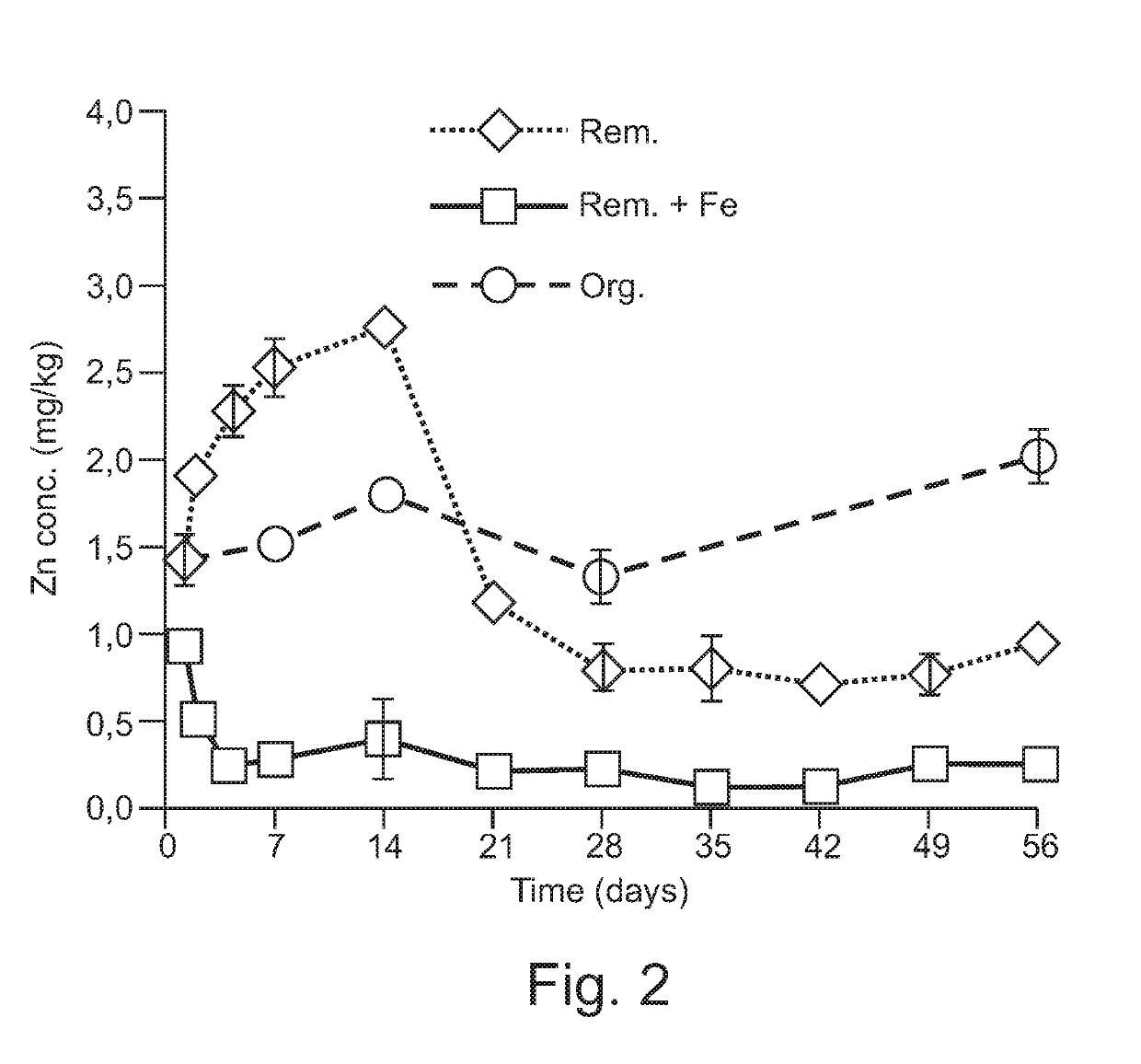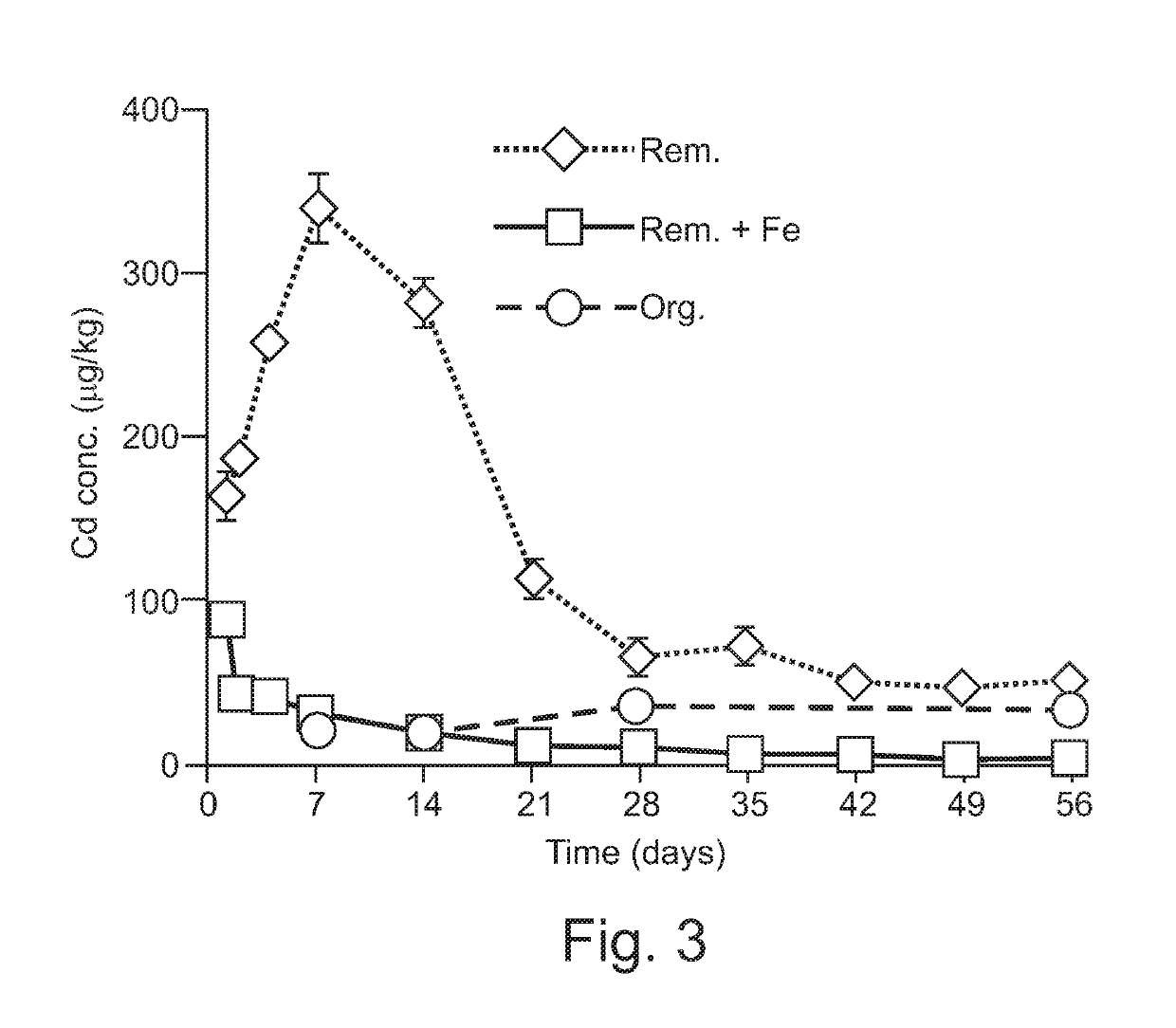Curbing toxic emissions from remediated substrate
a technology of toxic emissions and remediated substrates, applied in the direction of contaminated soil reclamation, etc., can solve the problems of edta-based soil remediation, toxic metal chelates with edta partly remaining in washed soil, and risk of uncontrolled post-remediation leaching
- Summary
- Abstract
- Description
- Claims
- Application Information
AI Technical Summary
Benefits of technology
Problems solved by technology
Method used
Image
Examples
Embodiment Construction
[0016]The acidic (pH=5.1) industrially contaminated soil (50 kg, dry weight) from Arnoldstein (Austria) with 860 mg kg−1 Pb, 330 mg kg−1 Zn and 3 mg kg−1 Cd was washed in a mixing vessel with 60 mM EDTA kg−1 solution (w:V ratio 1:1). According to the process described in the invention an addition of 1% (w / w) of zero-valent Fe (<0.5 mm granules) was applied into the soil slurry phase. The soil solid phase was then separated from slurry using a chamber filter press and in-press rinsed with 3 volumes of cleansed rinsing solution to remove the bulk of toxic chelates. The rinsing solution was cleansed and recycled as described in the patent application “Soil and sediment remediation” EP 3 153 246 A1.
[0017]Soil washing with EDTA removed 78, 20 and 83% of the Pb, Zn and Cd, respectively. Lower levels of Zn extractability from soil is known to one skilled in art.
[0018]The washed (remediated) soil contained 28% of moisture and was stored at room temperature for 8 weeks. Periodically, a 30 g ...
PUM
 Login to View More
Login to View More Abstract
Description
Claims
Application Information
 Login to View More
Login to View More - R&D
- Intellectual Property
- Life Sciences
- Materials
- Tech Scout
- Unparalleled Data Quality
- Higher Quality Content
- 60% Fewer Hallucinations
Browse by: Latest US Patents, China's latest patents, Technical Efficacy Thesaurus, Application Domain, Technology Topic, Popular Technical Reports.
© 2025 PatSnap. All rights reserved.Legal|Privacy policy|Modern Slavery Act Transparency Statement|Sitemap|About US| Contact US: help@patsnap.com



